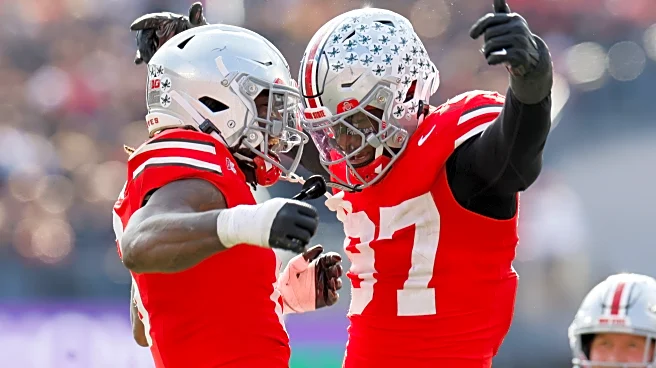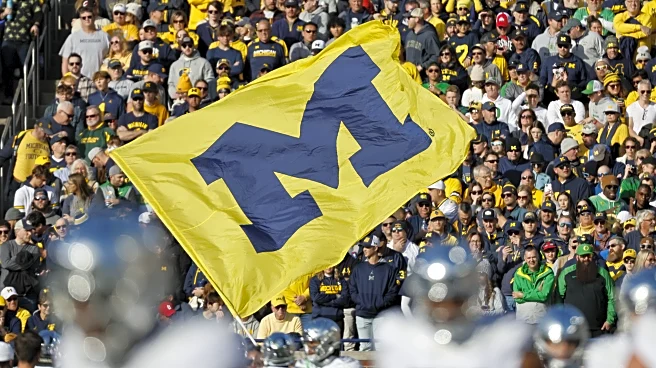What's Happening?
Week 10 of the college football season has led to significant changes in bowl projections, with several teams altering their playoff prospects. Texas Tech is now favored to win the Big 12, while BYU moves
into the at-large pool. Louisville is projected as the ACC champion, and South Florida replaces Tulane as the Group of Five representative. Oklahoma and Texas improved their standings with wins against Tennessee and Vanderbilt, but the losses have hurt the playoff chances for the Volunteers and Commodores. Miami's defeat to SMU has jeopardized its playoff hopes, while Georgia Tech must win the ACC to secure a spot.
Why It's Important?
These shifts in bowl projections highlight the competitive nature of college football and the impact of weekly performances on playoff eligibility. Teams like Texas Tech and Louisville stand to gain from their improved positions, potentially securing lucrative bowl game appearances and enhancing their program's prestige. Conversely, teams like Miami and Georgia Tech face increased pressure to perform in upcoming games to maintain playoff viability. The changes also affect fan engagement and media coverage, as the evolving playoff picture generates interest and speculation. The implications for recruitment, funding, and strategic planning are significant as teams navigate the playoff landscape.
What's Next?
As the season progresses, teams will continue to compete for playoff positions, with upcoming games critical for maintaining or improving their standings. The final playoff field will be determined in December, with teams like Miami needing favorable outcomes in remaining games to keep their hopes alive. The weekly release of rankings will provide ongoing insights into the shifting dynamics of college football, influencing strategies and expectations. Stakeholders, including coaches, players, and fans, will closely monitor these developments, anticipating potential matchups and strategizing for postseason success.
Beyond the Headlines
The changes in bowl projections reflect broader trends in college football, emphasizing the importance of performance and adaptability. The impact on recruitment and program funding is significant, as teams strive to secure playoff positions and enhance their visibility. The evolving playoff landscape may lead to strategic shifts in scheduling and conference alignment, influencing the future structure of college football. Additionally, the increased competition and media coverage could drive interest and revenue for the sport, shaping its long-term development and governance.














